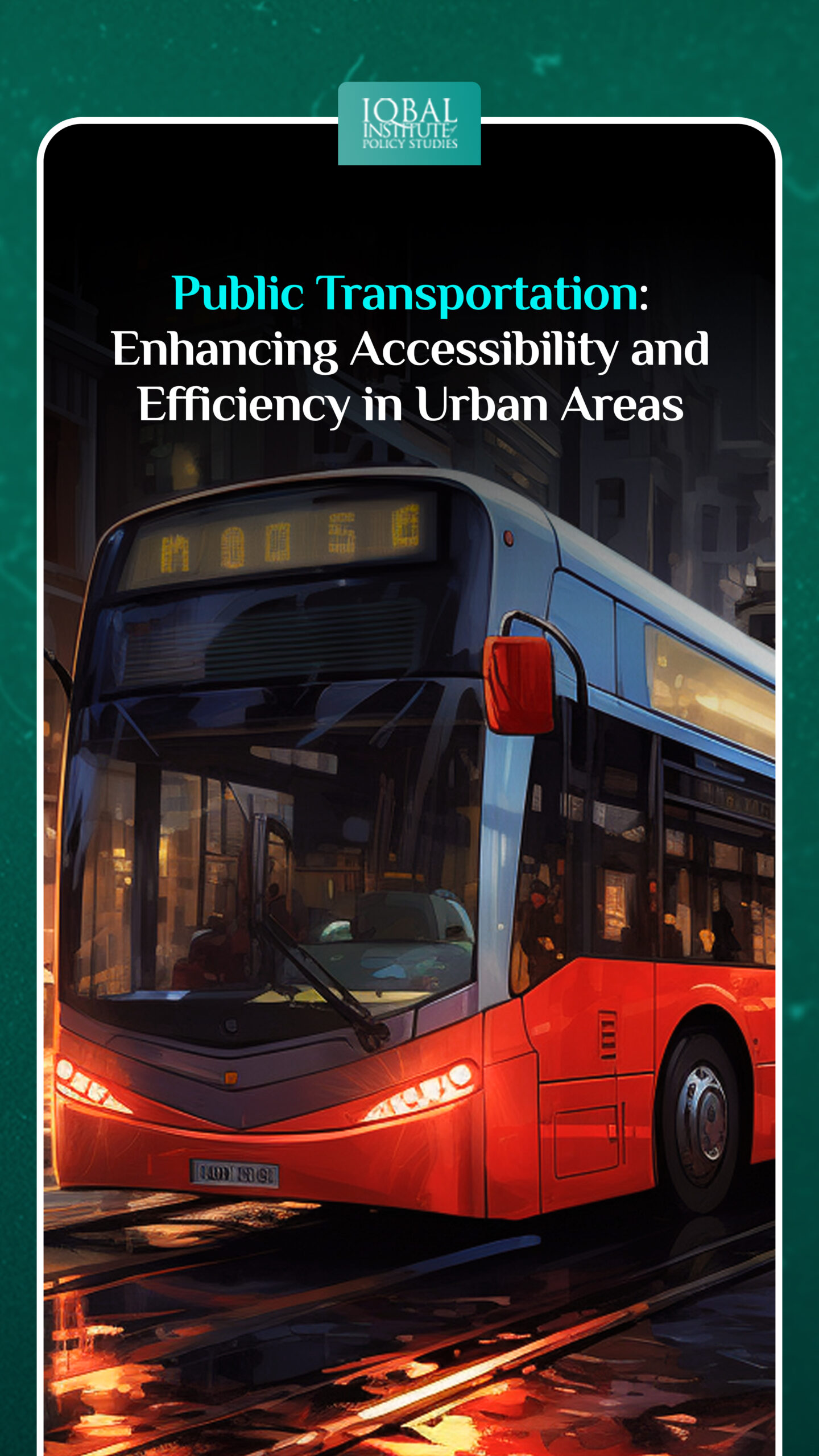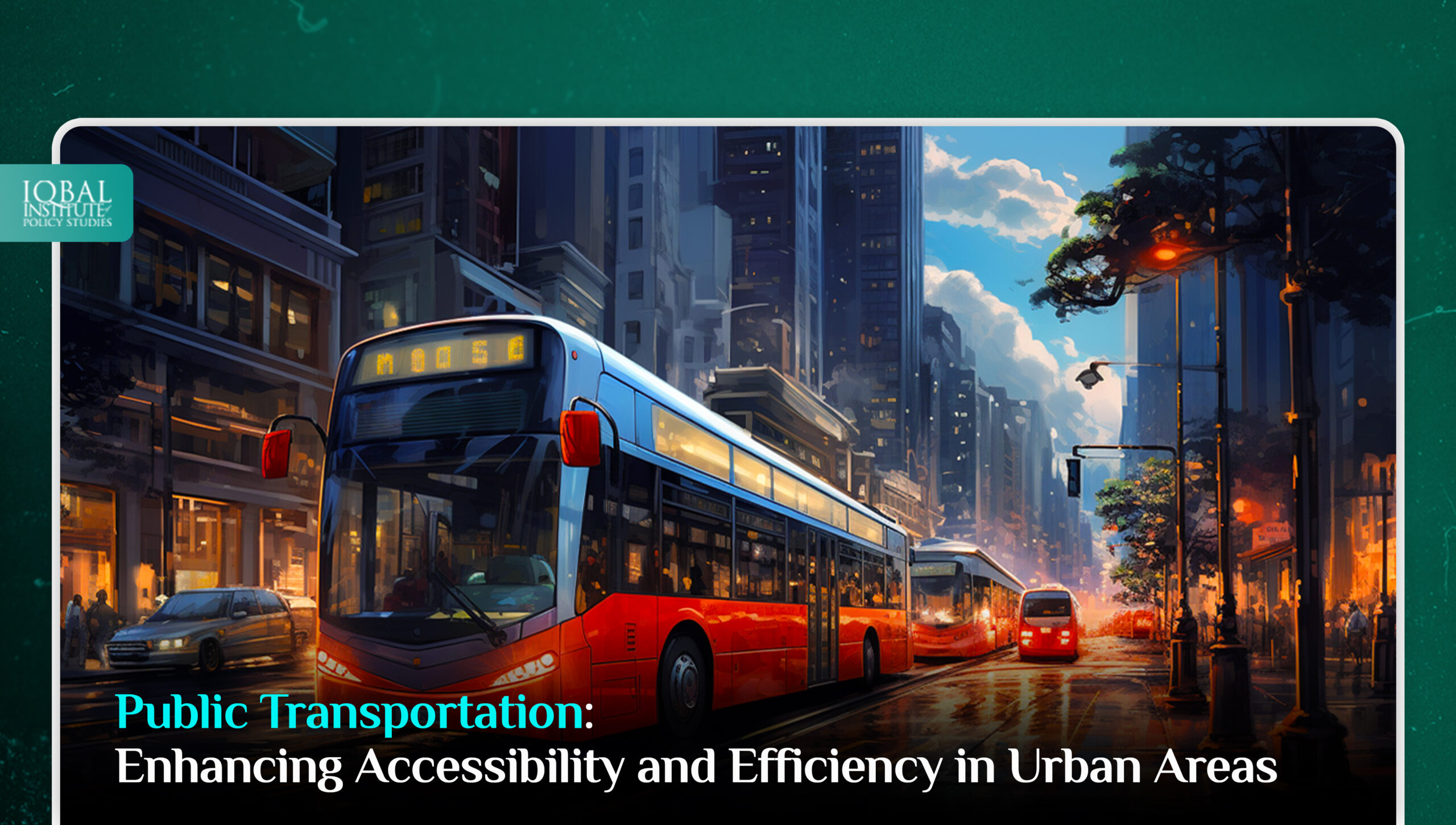Urban transport planning systems are crucial in promoting healthy and sustainable cities. Given increased traffic congestion and growing concern about environmental issues, public transit in cities is becoming an increasingly important and preferred means of transportation. It is critical for linking people, neighborhoods, and businesses. It not only decreases traffic congestion but also provides an effective and convenient form of transportation for millions of commuters every day, promoting social cohesion and economic vibrancy. While effective public transport is a sign of a well-developed city, many areas around the world continue to struggle with insufficient and underfunded transit systems. The lack of effective public transport has arisen as a serious concern in developing nations, slowing economic progress, aggravating social inequities, and inhibiting sustainable urban development. Thus, investing in modern and efficient public transport is a critical step towards attaining sustainable urbanisation and inclusive prosperity as developing countries attempt to close the development gap.
Significance of Public Transport in Urban Areas
Reducing Traffic Congestion
In metropolitan areas, 40-50% of fatal crashes occur. 50% of traffic deaths are pedestrians and vulnerable users, including the poor (Mahendra, 2016). Public transportation systems, such as buses, trains, and subways, help ease traffic congestion by taking private vehicles off the road. As more people opt for public transit, the number of cars on the streets decreases, leading to smoother traffic flow and reduced commute times for everyone.
Enhancing Mobility for All
According to 2019 data from 610 cities in 95 nations, only half of the world’s urban population has easy access to public transport (UN Statistics Division, 2020). Public transportation is a lifeline for individuals who cannot drive, such as the elderly, disabled, or those without access to private vehicles. According to a report an accessible travel planner was preferred by 44% of respondents, making it the most popular choice among users, particularly those with physical disabilities (UITP, 2021). It promotes inclusivity and ensures that all members of the community have equal opportunities for mobility and independence.
Environmental Benefits
Around one-fifth of worldwide carbon dioxide (CO2) emissions are caused by transport (Ritchie, 2020). In 2019, motor vehicles accounted for 83% of CO2 emissions from transportation. Personal automobiles and commercial trucks emitted more CO2 per passenger mile or tonne mile than the majority of other modes of transportation (CBO, 2022). Compared to individual cars, public transportation is more energy-efficient and emits fewer greenhouse gases. By encouraging people to use public transit, cities can make significant progress in their efforts to combat climate change and improve air quality.
Transit-Oriented Development (TOD)
Transit-oriented development involves designing neighborhoods around public transportation hubs, making it easier for residents to access transit services conveniently. TOD not only improves accessibility but also encourages more sustainable urban development.
Reducing Socioeconomic Barriers
Public transportation provides an affordable travel option for low-income individuals, helping them access jobs, education, and essential services without the burden of car ownership costs.
Time and Cost Savings
Using public transit can save commuters both time and money compared to driving. By avoiding traffic jams and parking costs, public transportation users experience a more predictable and cost-effective daily commute.
Boosting Local Economies
Efficient public transportation systems attract businesses and stimulate economic activity. As employees and customers can easily access commercial areas, businesses thrive, leading to job creation and increased tax revenues for the city.
Relieving Infrastructure Strain
Investing in public transportation reduces the burden on road infrastructure, leading to lower maintenance costs and longer lifespans for roadways. This enables cities to allocate resources more effectively for other essential projects.
Challenges and Solutions in Improving Public Transportation
Funding and Investment
Pakistan’s transport system is predominantly reliant on road transit, which accounts for 90 percent of national passenger traffic and around 96 percent of freight movement (Finance Division, 2008). However, the country’s infrastructural situation is relatively poor by international standards and this has an acute effect on the lives of every Pakistani in the country. One of the most significant challenges in improving public transportation is securing sufficient funding for infrastructure development and ongoing operational costs. Public transportation projects often require substantial investments and many developing countries struggle to allocate adequate funds due to competing budget priorities.
Solution
Governments and international organizations need to prioritize public transportation investment, allocating sufficient funds for infrastructure development, maintenance, and upgrading existing systems. Public-private partnerships can also help in raising capital for transit projects.
Inadequate Infrastructure
Outdated or insufficient infrastructure is a common hindrance to improving public transportation. Lack of dedicated lanes, poorly maintained roads, and limited connectivity between different modes of transit can lead to inefficiencies and delays, discouraging people from using public transportation.
Solution
Investing in modernizing and expanding infrastructure is crucial. This includes developing dedicated bus lanes, creating integrated transport hubs, and improving pedestrian and cycling infrastructure to encourage multimodal transportation.
Limited Integration and Coordination
Efficient public transportation relies on seamless integration and coordination between various modes of transit, such as buses, trains, and trams. In many cases, these systems operate independently, leading to disjointed schedules, confusing transfers, and reduced overall efficiency. For instance, Karachi’s current public transport system accounts for only 4.5% of the entire vehicle fleet and meets around 42% of commuter demand. The bulk of commuters used private vehicles, which account for 36% of overall vehicular traffic but just 21% of passengers. Another means of transportation is para-transit (rickshaws and taxis), which account for roughly 10% of all cars on the road and 8% of all clients, which is a reasonable number given its size. On the other hand, buses transport the bulk of passengers, over 5.6 million per day, accounting for 42% of all motorised transit modes. There are around 21,800 buses registered and operating on the road, implying that a bus transports an average of 257 passengers per day. However, there is an absence of a comprehensive transportation system, a heavy burden on inadequate public transportation, no dedicated lanes, or any other traffic management (Ahmed, 2019).
Solution
Enhancing integration between different modes of public transit can be achieved through coordinated planning and the use of smart technology. Implementing integrated fare systems and real-time information sharing can streamline travel for passengers.
Safety and Security Concerns
According to the ADB analysis, in Pakistan, harassment in public places and on public transport has a major influence on female mobility. 31% of students, 23% of working women, and 20% of homemakers reduced their usage of public transportation. 40 percent curtailed their travel after sunset, reducing their employability (Zulfiqar, 2020). Safety and security are crucial factors in encouraging people to use public transportation. Inadequate lighting, poorly maintained stations, and the risk of crime can deter potential riders, especially during off-peak hours, leaving them reliant on less safe alternatives.
Solution
Improving safety and security in public transportation involves increasing surveillance, providing well-lit and well-maintained stations, and training personnel to handle emergencies. Collaborating with law enforcement can also enhance passenger safety. Moreover, introducing women-only compartments or entire vehicles within existing public transportation modes, such as buses, trains, and metro systems, can provide a secure space for female passengers. This segregation helps reduce incidents of harassment and allows women to travel without fear.
Overcrowding and Capacity Issues
In densely populated urban areas, public transportation often faces overcrowding and capacity challenges, particularly during rush hours. According to a 2019 Bloomberg CityLab analysis, Karachi’s public transport infrastructure is the poorest among 99 major cities worldwide, serving less than 42 percent of commuters and relying on decades-old, overloaded buses that at times use the roof as a second deck for people (Sheraz, 2021). This can result in uncomfortable and unpleasant travel experiences, discouraging people from using public transit regularly.
Solution
Transport authorities should conduct comprehensive capacity planning to address overcrowding issues. Introducing staggered work hours and optimizing schedules can help distribute passenger loads more evenly throughout the day.
Resistance to Change and Cultural Norms
Public transport is used by 20% of Pakistanis, compared to a global average of 48%. Pakistanis also use bus and minibus services at a lower rate (11%) than the global average (25%) (ptProfit, 2019). Changing transportation habits and cultural norms can be challenging. In some regions, there is a strong preference for private vehicles, and convincing people to shift to public transportation may require effective marketing, awareness campaigns, and incentives.
Solution
Raising awareness about the benefits of using public transportation and creating a positive perception of transit services is essential. This can be achieved through educational campaigns, community engagement, and incentives like discounted fares or loyalty programs.
Conclusion
Improving public transportation in developing countries requires a multi-faceted approach that addresses funding, infrastructure, safety, integration, and cultural attitudes toward transit. By overcoming these challenges and implementing effective solutions, cities can build efficient, accessible, and sustainable public transportation systems that benefit both residents and the environment. Furthermore, investing in modern and well-integrated transit networks can enhance urban mobility, reduce traffic congestion, and contribute to the overall economic and social development of the region.
References
Ahmed, T. (2019, February 6). Public transport in Karachi caters only 42 percent demand: study. Retrieved from Business Recorder: https://fp.brecorder.com/2019/02/20190206445088/
CBO. (2022, December). Emissions of Carbon Dioxide in the Transportation Sector. Retrieved from Congressional Budget Office: https://www.cbo.gov/publication/58861
Finance Division. (2008). TRANSPORT AND COMMUNICATIONS . Retrieved from https://www.finance.gov.pk/survey/chapters/14-Transport%20final08.pdf
Mahendra, D. (2016). URBAN TRANSPORT IN DEVELOPING COUNTRIES Balancing Accessibility with Aspiration. World Resources Institute. Retrieved from https://sustainabledevelopment.un.org/content/documents/21674Mahendra_Urban%20Access.pdf
ptProfit. (2019, July 22). Why do connected Pakistani millennials underutilise public transportation system? Retrieved from https://profit.pakistantoday.com.pk/2019/07/22/why-do-connected-pakistani-millennials-underutilise-public-transportation-system/
Ritchie, H. (2020, October 6). Cars, planes, trains: where do CO2 emissions from transport come from? Retrieved from Our World in Data: https://ourworldindata.org/co2-emissions-from-transport#:~:text=Transport%20accounts%20for%20around%20one%2Dfifth%20of%20global%20carbon%20dioxide,CO2%20emissions%20from%20energy%5D.
Sheraz, W. (2021, June 3). Public transport in urban Pakistan – a concept alien to the privileged? Retrieved from Daily Times: https://dailytimes.com.pk/766477/public-transport-in-urban-pakistan/
UITP. (2021, March 12). How to make public transport accessible and inclusive for all. Retrieved from https://www.uitp.org/news/how-to-make-public-transport-accessible-and-inclusive-for-all/
UN Statistics Division. (2020). Make cities and human settlements inclusive, safe, resilient and sustainable. Retrieved from United Nations Statistics Divisions: https://unstats.un.org/sdgs/report/2020/goal-11/
Zulfiqar, M. F. (2020, September 14). Public Transportation System and Female Mobility in Pakistan. Retrieved from PIDE Blog: https://pide.org.pk/blog/public-transportation-system-and-female-mobility-in-pakistan/
This article is written by Haneen Gul. Haneen is a research analyst at the Iqbal Institute of Policy Studies (IIPS).



Leave a Reply